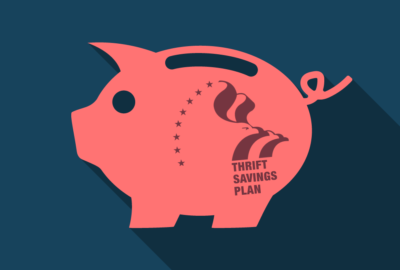
TSP’s international fund on fire; G fund not so hot
The fund where federal workers have most of their retirement nest egg returned 2.3 percent last year, while the fund where they have the least amount invested...
The international stock I fund, who investors have made the stepchild of the Federal Thrift Savings Plan, is on fire. Or at least it was last year. After years of lagging behind the more popular C fund (which tracks the S&P 500 ) and the S fund (small cap American stocks), the I fund returned an astounding 25.4 percent in 2017. That compares to a 6.1 percent return over the last five years and a meager 2.2 percent from 2007 to the end of 2017.
During the same 1-year, 5-year and 10-year time frame, the Treasury securities G fund, the most popular investment option of federal investors, returned 2.3 percent; 2.1 percent and 2.4 percent.
The least popular investment option, the F fund (bonds) has a 1-year return of 3.8 percent; a 2.5 percent return over 5-years and 4.3 percent over the last full 10 years.
Many federal investors consider the lowest returning fund, the G fund, safe because it never has a bad day. By the same token, when compared to other options over time, it never has a very good one either. Many experts warn that parking all or most of your TSP nest egg in the G fund during retirement is actually risky because its value can be eroded by inflation. That is especially true for people under the FERS retirement — which includes most current federal and postal workers —because their annuities are less generous than those under the old CSRS retirement system AND their cost of living adjustments are reduced if inflation exceeds 2 percent each year. CSRS retirees get a full COLA. FERS employees get diet COLAs. The Trump administration has asked Congress to put current and future CSRS retirees under a diet COLA plan (with annual inflation adjustments 0.5 percent less than the actual rise in inflation) and to eliminate COLAs entirely for those under the FERS system.
Investing in the TSP, Uncle Sam’s in-house 401(k) plan (with its generous 5 percent government match) is important, but optional, for most people under the CSRS system because of their more generous pension benefit formula and the fact that they pay more for their annuities.
Investing in the TSP is mandatory for FERS workers and retirees because between 30 and 50 percent of their after-retirement income will come from TSP investments and earnings.
During the Great Recession, hundreds of thousands of federal investors fled from the sagging C, S and I funds and put their money in the G fund because it is “safe.” And they stopped buying the stock-indexed C,S and I funds even though they were, in effect, on sale. And they missed on the big recovery all of them made over the past few years.
As to the “safety” factor of the G fund, financial planner Arthur Stein says that safety is a relative term and that over time, retirees who have most or all of their nest egg in the Treasury securities fund (with its 2.4 percent average return over the last 10 years) means they will lose purchasing power. He recommends that in retirement feds keep 50 to 60 percent of their TSP portfolio in stocks. Stein was our guest this week on our Your Turn radio show. To listen to it anytime, click here.
Nearly Useless Factoid
Rock star Alice Cooper’s golf handicap is 5.3.
Source: ShortList
Copyright © 2025 Federal News Network. All rights reserved. This website is not intended for users located within the European Economic Area.
Mike Causey is senior correspondent for Federal News Network and writes his daily Federal Report column on federal employees’ pay, benefits and retirement.
Follow @mcauseyWFED





